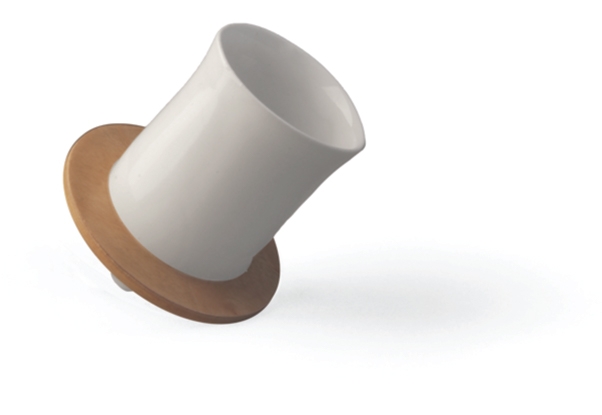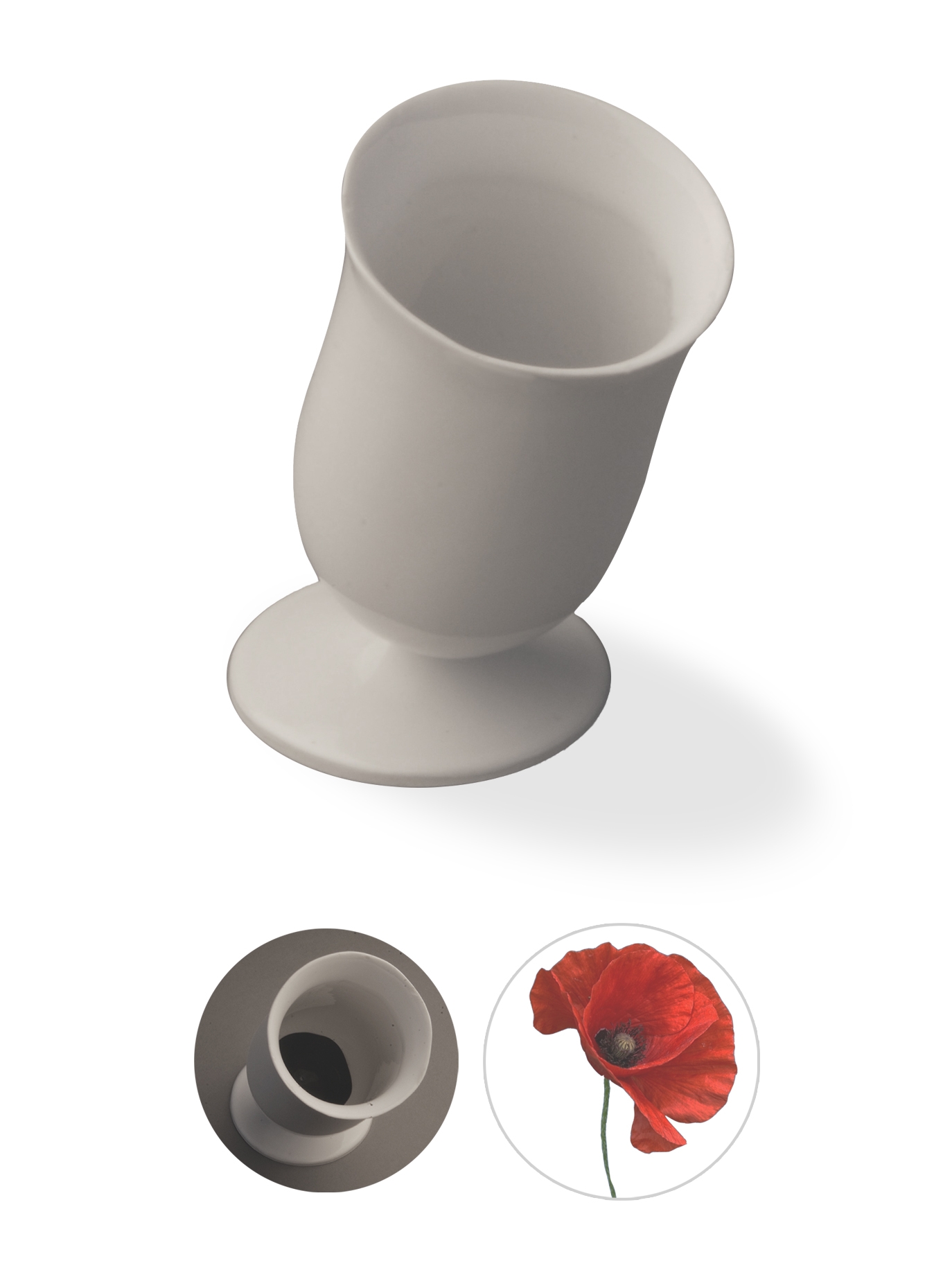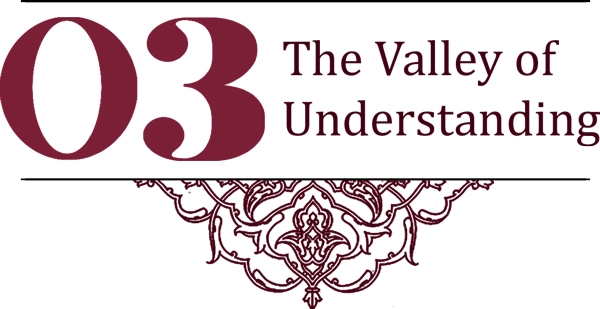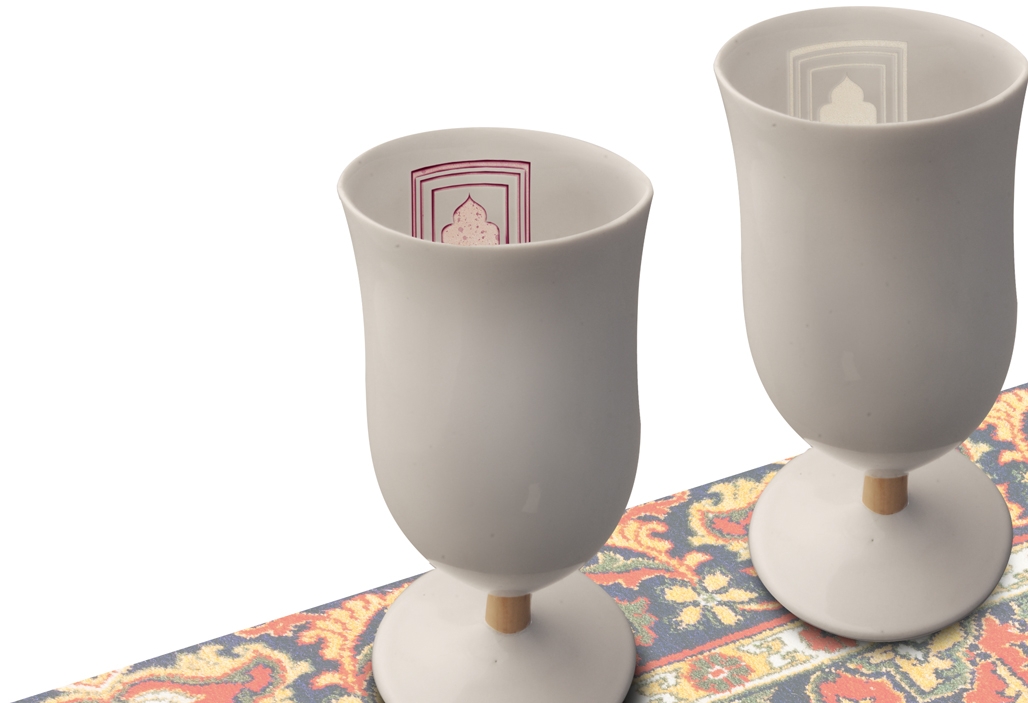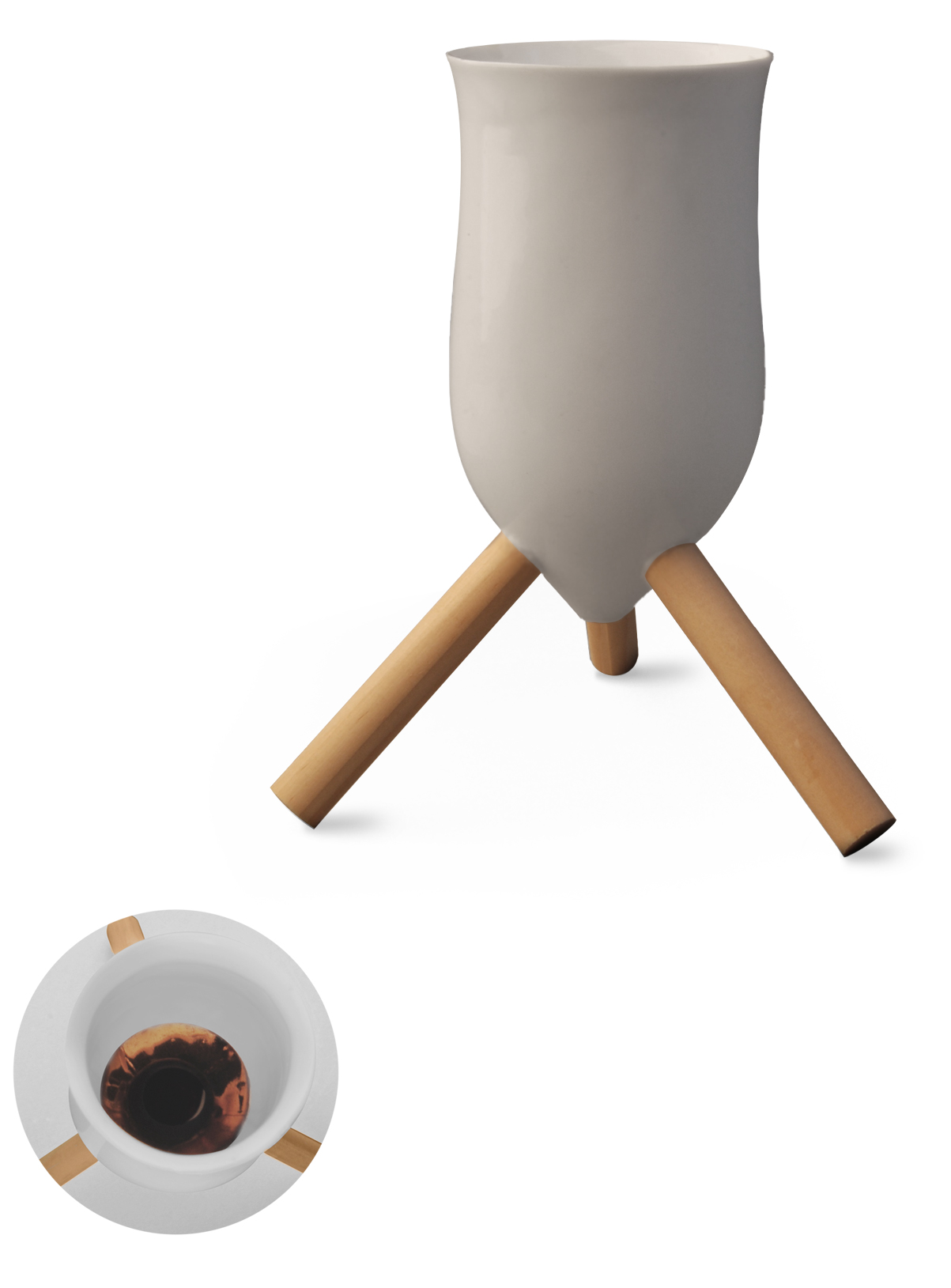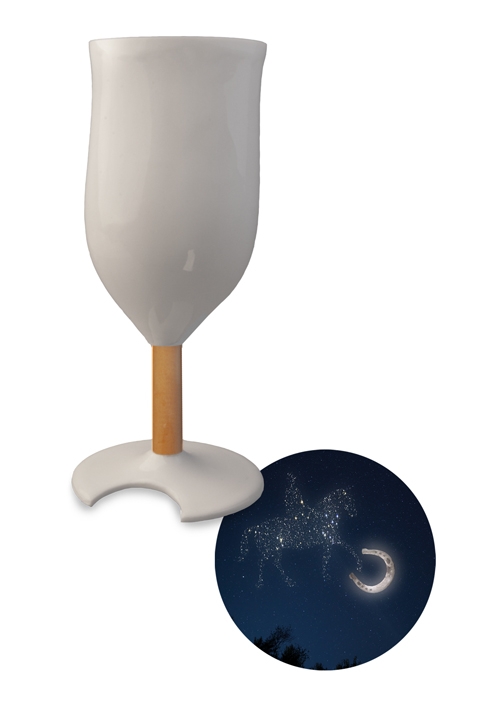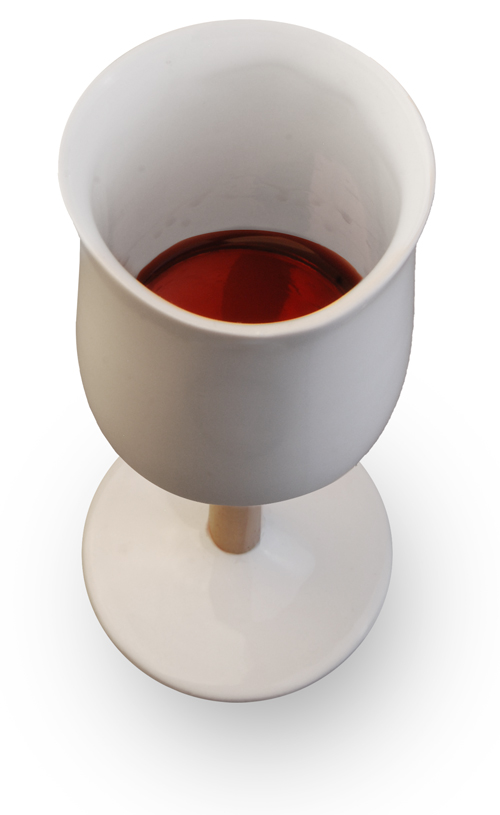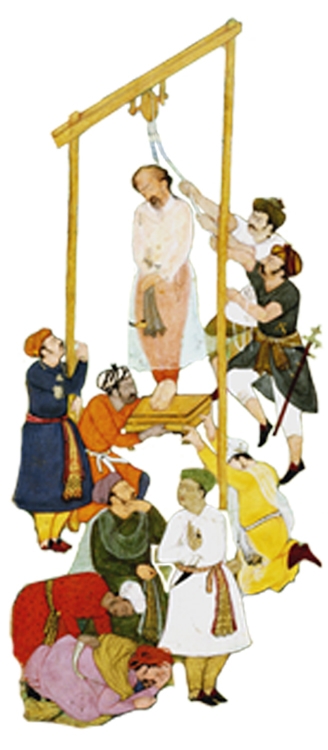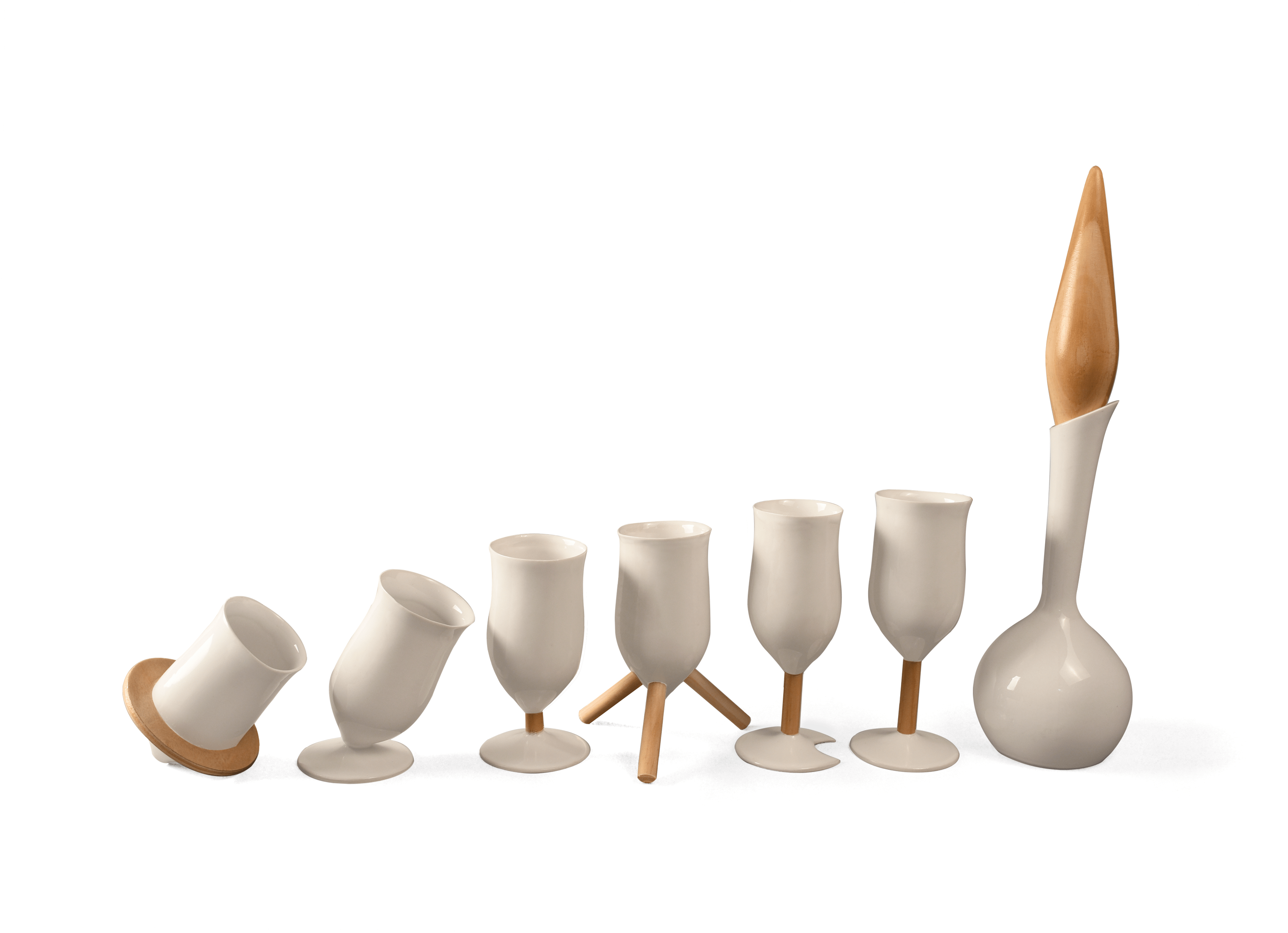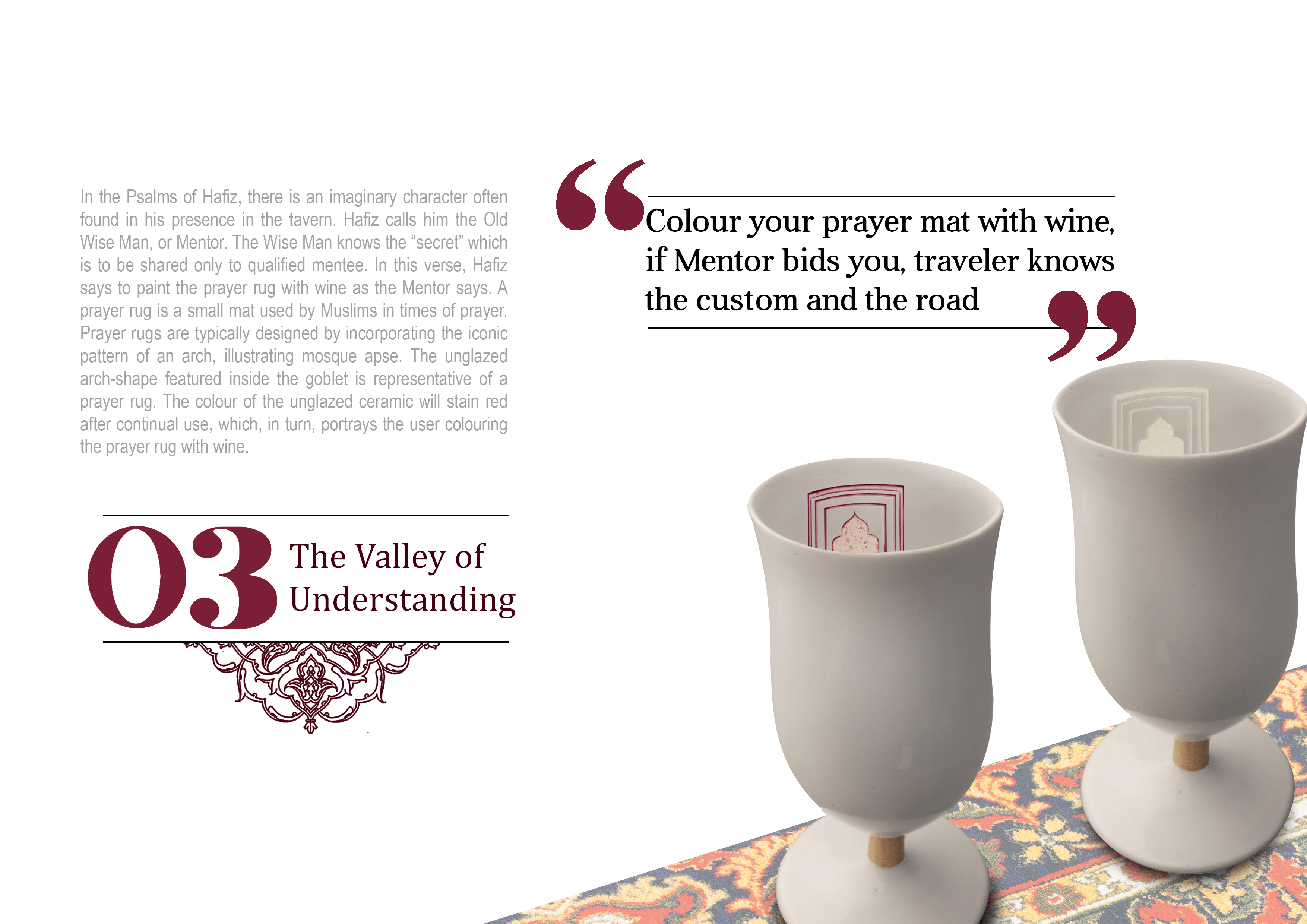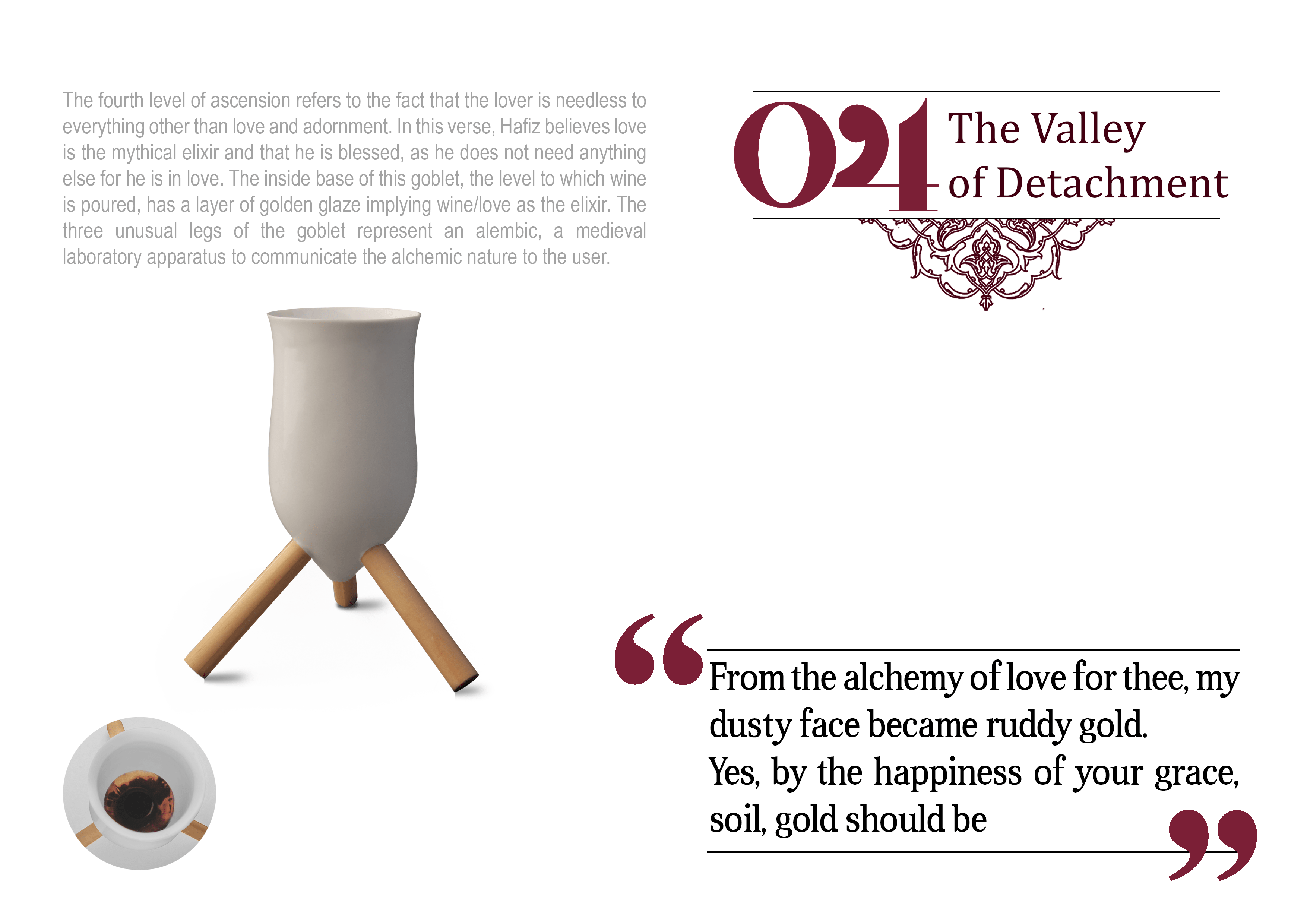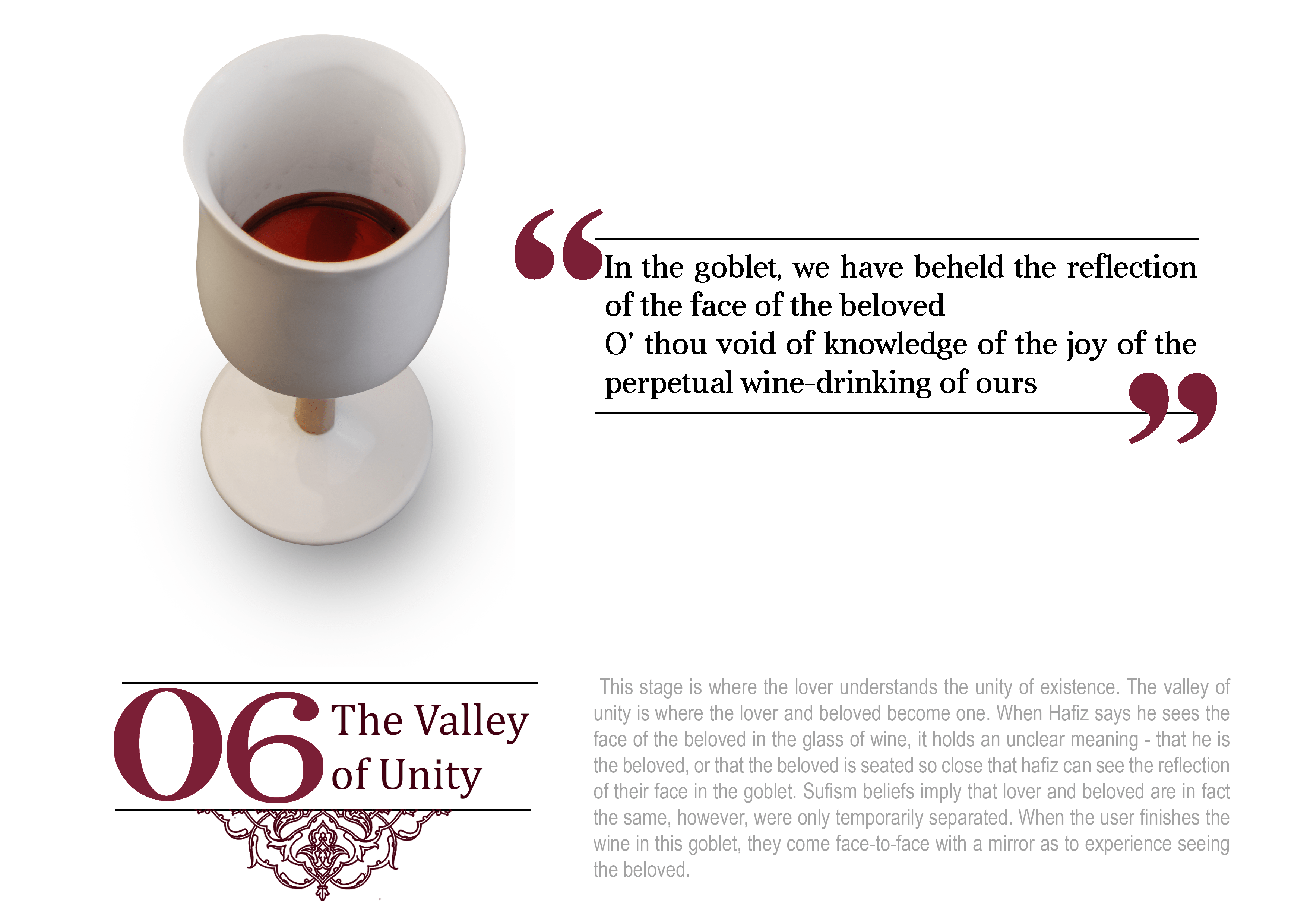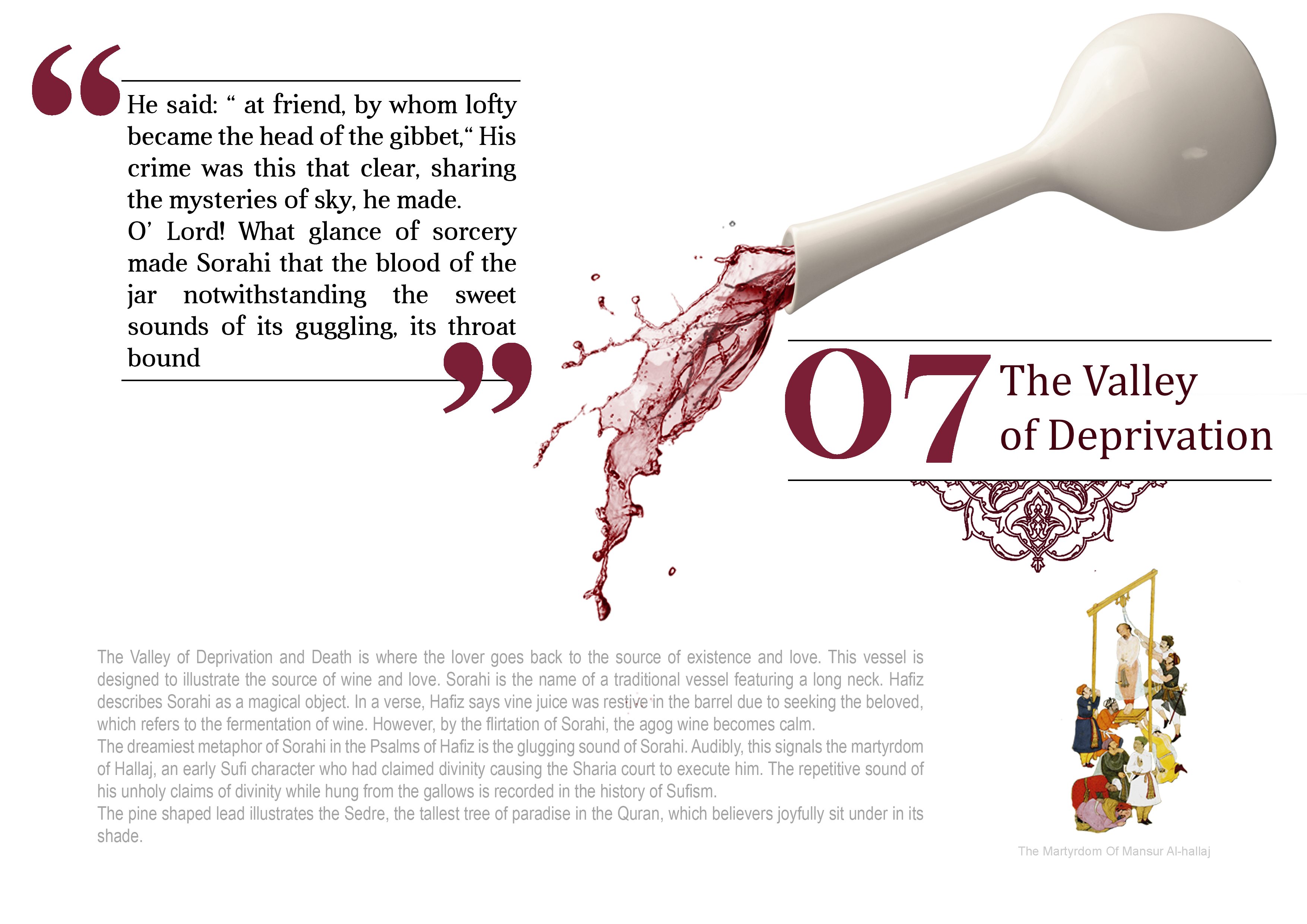Antahoora.
Ceramic Collection
Transformation of the classic Sufism poetic literature into a ceramic collection to encourage dialogue between users
Cast Porcelain, glaze, pine timber
Antahoora is a collection of seven ceramic objects, comprised of six goblets and one vessel. In the context of Sufism, the seven valleys of ascension inspired Antahoora. Each of these objects represents a step of ascension derived from the chosen verses of Hafiz Psalms (14th century). Sufism, or religion of love, was a mystical, religious and social movement through the initial history of Islam. This sect of Islam was a combination of pre-Islamic beliefs and an unorthodox reading of Islam. This romantic reading of Islam was an alternative for the prohibited elements of love, peace, music, wine, and erotism. Sufism’s symbolic language implies wine is integral to adoration, that goblets portray the hearts of mankind, that wine is love, and drunkenness an act of worship.


